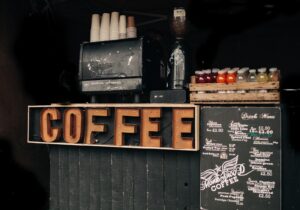Coffee Filter: Selection, Wetting and Pre-Wetting
4 min read
Alternatively brewed coffee has long been popular around the world. Funnel and kemex allow us to get a bright and rich taste of our favorite coffee bypassing espresso machines. However, to prepare such a drink, it is necessary not only to know the nuances of working with an alternative, but also to use paper filters for brewing. In this article we will tell you how to choose the right filter for coffee, whether it is necessary to wet it in the brewing process and what is “pre-soaking” coffee.
Why do you need a coffee filter?
Disposable coffee filter is actively used in kemex, kalitas and ravens, as well as – in the aeropress. Such a filter carries several important functions:
- saturates your drink with oxygen;
- prevents coffee particles from getting into your drink;
- traps the essential oils that are always released during the process.
Paper filter
The paper filter for brewing coffee didn’t appear until the turn of the 20th century. In Dresden, Germany, Melitta Benz was tired of finding particles of ground coffee in her cup. She experimented with various filtering materials, including her schoolboy son’s blotting paper. Within six months, the woman had already applied for a patent.
On July 8, 1908, the paper coffee filter was patented and Mrs. Bentz founded the Melitta Bentz Company. This is how this company, known to this day, made history.
Filter paper
The filter paper directly affects the taste of the coffee, making it delicious and flavorful. It is often dense but porous. This keeps coffee dust and grounds out of the cup, while water passes through the filter perfectly – and creates a light body and clean flavor in your drink.
Filter paper is differentiated by density:
- medium density paper is used for drip coffee makers;
- high density paper is used for kamex and kalitas.
It is important to realize that the density of the paper directly affects the rate of spillage of the drink. The denser the paper – the slower the spill. In order not to get an overly strong drink, it is better to use coarse coffee with a high density paper filter.
The paper for the filter can be:
- bleached (involves treatment with chlorine and oxygen, this method is sometimes called not too environmentally friendly, but it is guaranteed to get rid of the paper aftertaste);
- unbleached (a more environmentally friendly option without chlorine treatment, but it is believed that this sometimes gives the coffee a cardboard flavor).
Still, most modern processing technologies guarantee not only the safety of the filter for use, but also the absence of odors and flavors in the finished beverage.
An important advantage of a disposable paper filter is saving time. After all, after your favorite coffee was in your cup, the filter with coffee grounds can simply be thrown away. However, there is also the other side of the coin: one filter – one portion of coffee.
Which filters are better?
In the great debate about bleached and unbleached paper coffee filters, it all comes down to your preference: taste and the environmental impact of production.
If you prefer the most eco-friendly option, you should buy high-quality unbleached filters and rinse them well before use. On the other hand, if you’re concerned that your coffee might get a paper-like flavor even with a double rinse, choose bleached filters, ideally oxygen bleached. Such filters do not need to be rinsed.
And remember that quality matters! A cheap bleached filter can give your coffee a real paper taste, while a high quality unbleached filter can minimize this.
Do you need to wet your coffee filter?
You’ve probably noticed that most coffee filter recipes suggest pouring hot water through the paper filter first. Why is this done? It is believed that by doing so, the coffee can be rid of the paper flavor. By dousing the filter with boiling water (ideally twice) before brewing the coffee, the cleanest flavor can be obtained. This is called rinsing the coffee.
But again, quality filters usually do not impart extraneous flavors to the coffee. So filter rinsing is a conditional and optional process.
What is pre-soaking coffee?
Pre-soaking is the first stage of brewing before the main body of water is poured through the filter. To do this, ground coffee is poured into the filter, a little water is added, and you wait a few seconds for the coffee to soak in this water.
Why do you pre-soak coffee?
Pre-soaking artificially enhances the degassing process of freshly roasted coffee. Some people believe that this makes the brewing process more manageable and the flavor of the beverage better. Let’s find out if this is actually the case.
How do I calculate the volume of water for pre-soaking?
- It is recommended to use 2 grams of water per 1 gram of coffee;
- if the coffee portion is 17 grams, you need 34 grams of water;
- duration of the procedure: 35 seconds, then the main stage of the preparation of the beverage begins, namely the infusion of water.
In professional coffee literature, about which you can read more here, opinions on the necessity of pre-soaking and its purpose diverge.
For example, James Hoffman (“Atlas of Coffee”), specifies that there is no scientific explanation why pre-soaking makes coffee taste better. However, in practice, coffee brews more correctly and fully if this step is still carried out. The author attributes this phenomenon to the release of carbon dioxide from the coffee.



